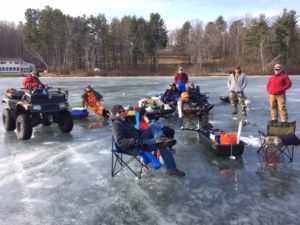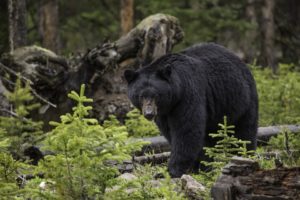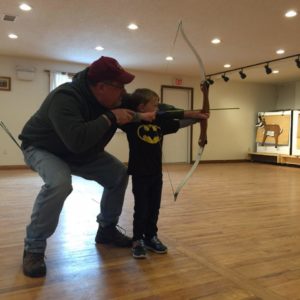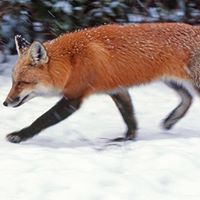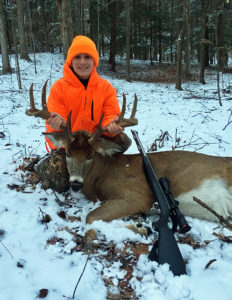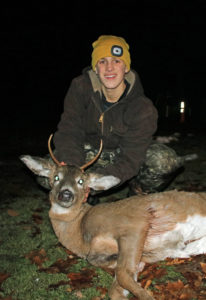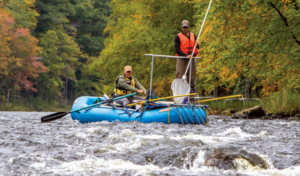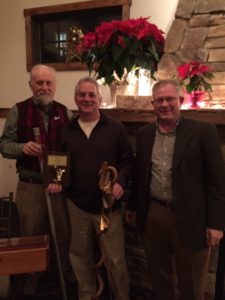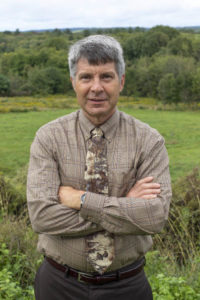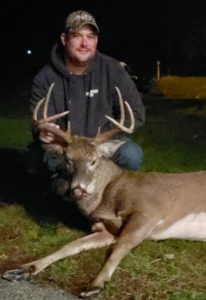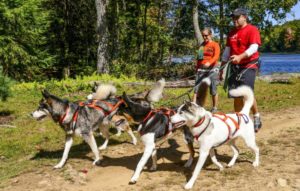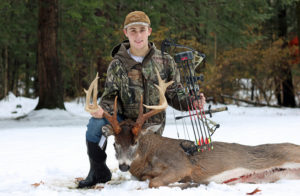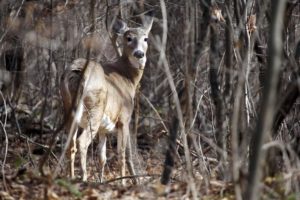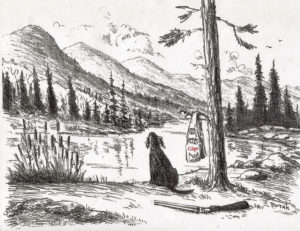 By now, I suspect the entire outdoor sports and conservation communities know that George ‘Gige’ Darey has passed at the age of 90. A lot has been written about Gige this past week and undoubtedly there will be more to come.
By now, I suspect the entire outdoor sports and conservation communities know that George ‘Gige’ Darey has passed at the age of 90. A lot has been written about Gige this past week and undoubtedly there will be more to come.
Gige’s many accomplishments did not go unnoticed and he was the recipient of more plaques and awards than you can shake a stick at. Here are just a few: the Francis Sargent Award, Massachusetts Sportsmen’s Council (MSC) Special Recognition Awards in 1999 and 2000, he was inducted into the MSC Hall of Fame in 2001, was awarded the MSC Ray Gribbons Award in 2007, the MSC Lifetime Achievement Award in 2008, and he received the MSC Special Recognition award upon his retirement from the Mass Fish & Wildlife Board in 2017.
He was chosen the Berkshire County League of Sportsmen (BCLS) 1988 Sportsman of the Year. Berkshire Natural Resources Council (BNRC) George Wislocki and Tad Ames noted that Gige was one of the founders of Sportsmen for Land Preservation and helped raise over $300,000 over the period of 6 years, which was crucial for the survival of the BNRC. “He cemented a relationship of the BNRC with the sportsmen of Berkshire County”. In 1996, he was presented a U.S. Environmental Protection Agency Environmental Stewardship Award. He was honored by the Fisheries and Wildlife Board in 2004 when the Housatonic Valley Wildlife Management Area in Lenox was renamed the George Darey Wildlife Management Area. He received awards from the Lenox Land Trust.
Two benches were dedicated in his and George Wislocki’s honor recognizing their work in regard to the purchase and sale agreement of a 94.8 acre meadow abutting Stockbridge Bowl from the Gould Family to the Town of Stockbridge in 1981.
One doesn’t pile up that many awards and citations for doing nothing. His accomplishments were recently recounted by Fish & Wildlife Board Vice President Mike Roche who served with Gige for some 32 years. “I have been following conservation issues all my life and served on the F&W Board with Gige Darey since 1986,” said Roche “No individual I know has ever had a greater positive impact or contributed more to the natural resources of Massachusetts in so many critical ways.”
Former DFW Director Wayne MacCallum said that the Board sets policy, regulatory authority and has to approve the hiring of every person appointed to the DFW. “George was absolutely incredible in terms of requiring that all appointments were made with the most qualified people. He was a strong advocate in support of professional natural resource management. Not only in Massachusetts, he is legendary throughout the country for the programs the MA DFW has instituted He is a fierce fighter for the environment. Much of what you see here (open space in the Berkshires) has to do with George Darey. Under George’s leadership, the DFW went from a hooks and bullets agency to an integrated agency incorporating the protection of many different species”. During his tenure on the F&W Board, he was appointed by eight different governors and worked with four MassWildlife Directors.”
 Let’s look at what he accomplished while serving on that F&W Board for 38 years, 35 of which as its Chairman:
Let’s look at what he accomplished while serving on that F&W Board for 38 years, 35 of which as its Chairman:
• In 1978, when Gige took his seat on the Board, there were 4,000 acres of land protected by DFW. Today over there are over 200,000
• The deer harvest was 3,107, last year it was over 13,000
• Wild turkey was an experiment in 1978 and now the kill is over 3,000 a year
• There were no nesting bald eagles in 1978, since then 702 eagles have fledged and 68 nesting pairs last year.
• The pheasant program got to a point where it was sustainable
• Regulations required the switch from lead shot to steel shot for waterfowl were implemented
• The Piping Plover was an endangered species, now MA has most of the east coast piping plover population.
• Transferred the National Heritage Program from the DEM to MassWildlife in 1990 and implemented the non-game check-off on tax forms.
• Urged the implementation of the “Presumption of Openness”. Now all land purchased in the Commonwealth is presumed to be open to hunting and fishing
• There has been no license fee increase in over 20 years
• Heavily involved in the establishment of the Mass Outdoor Heritage Foundation, a non-profit (501c3). The funds are used for such projects as wild brook trout restoration, and other worthy projects.
• Unlike many other states that allows Sunday hunting, he was able to obtain compensatory hunting dates for migratory bird hunting in Massachusetts
• Established Deer Management Zones to improve opportunity for sportsmen
• Established the Wildlands Stamp where sportsmen self-imposed a $5 assessment to the sale of hunting and fishing licenses dedicated exclusively to the protection of wildlife habitat open to hunting, fishing, and other wildlife related recreation; and science-based management of wildlife and wildlife habitat.
• Established a financial partnership with Ducks Unlimited for conservation efforts in Canada
• Established a Memorandum of Understanding with Environmental Police to increase resources and improve the outdoor education programs
• Promoted the Archery-in-the-Schools program
• Construction of the new DFW headquarters – one of the world’s finest and most environmentally progressive buildings
• Fought hard to keep the DFW Director’s position from becoming a political appointment and also keeping it in the hands of a professional
And, if I may add a few more:
• He fought for and finally obtained the Trout Catch & Release Sections in the Housatonic River in Lee and Stockbridge, and while at it, got the trout stocking program which enhanced it. He accomplished the same for the Millers River.
• Conducted an Environmental battle with GE for clean-up of Housatonic River
• Was heavily involved with the ACEC designation on the Housatonic River
• Leveraging State and town funds, he was heavily involved with the Town of Lenox acquisition and conservation of the Post Farm, Parson’s Marsh and the Edith Wharton Park.
• He started the Outdoor Club at Wahconah School whereby allowing students to experience the wonders of the outdoors and outdoor sports.
I would say that qualified him for an award or two, ey?
He was a Board member of the Berkshire Natural Resources Council, Green Berkshires, Sportsmen for Land Preservation, a founding member of the Housatonic River Initiative, the Massachusetts Outdoor Heritage Foundation, the Lenox Land Trust, and was instrumental in forging forestland protection and management partnerships between MassWildlife and the Nature Conservancy, the Ruffed Grouse Society, the National Wild Turkey Federation, Green Berkshires and other conservation organizations. At one time, he was a Lenox Selectman and a member of the Lenox Conservation Commission.
Often referred to as the champion for all wildlife, from fish and big game, to the less heralded species greatly needing our understanding and protection, it is no wonder that the 818-acre Housatonic Valley Wildlife Management in Lenox bears his name.
In 2017 a party was held for Gige at the Stockbridge Sportsmen’s Club celebrating his career and accomplishments. Governor Charlie Baker and Lt Governor Karen Polito attended along with a long list of notables. Lt Governor Polito commented on Gige’s long service and mentioned that his services were all for free. (Other than travel expense reimbursement, F&W Board members are not paid). She thanked Gige for sharing so much of his time, energy and love for this Commonwealth. “Having Gige on this Board for 38 years, chairing it for 35 years absolutely mattered here in the Commonwealth”, she said.
Gige took some razzing from MA Environmental Secretary Beaton and Governor Baker for missing 5 of those Board meetings out of 400 over the course of 38 years. Twice as a pall bearer, once caused by an ice storm which prevented him from getting there, a health issue and one day to go bird hunting.
Governor Baker said that “George is a hero, not just because of the time he spent on the Board but the good work that was done. We all benefit tremendously from the coalitions that he built. We live in a difficult age where people draw very bright lines and have trouble viewing any other point of view but their own and are really not that experienced in coalition and finding common ground. One of the truly great things is that he found common ground all of the time, and he had a core set of principles. He understood that he was one player among many and he never forgot that. “
“He worked extremely hard to figure out where the common ground was and where the opportunity was to support the stuff that he cared so much about. Along the way he created a bunch of public and private institutions that stood the test of time and will be here for a very long time. The legacy is not just the history but it is also what is going to happen going forward because those institutions are in place and will continue to perform long after the rest of us have gone on to do other things. You are such a son of Massachusetts”, Governor Baker said, “and you have meant so much to the Commonwealth and so much to the people of the Commonwealth”.
Gige often commented on how much his partner Ginny Akabane meant to him and how lucky he was. Referring to his service on the Board, he said, “The ride that I have been on, I would not change one bit”. He said that he has enjoyed working with the outdoor sportsmen and was very proud to represent them.
Mike Roche, Vice Chairman of the MA F&W Board announced that the Board created an award in Gige’s name. “From this time forward there will be a Gige Darey award to be presented to a MassWildlife staff member who exemplifies the values, work ethics and standards that George created”.
Gige was an avid grouse and woodcock hunter. One day his hunting dog unexpectedly died. He told one of his friend Scott MacWilliams that he not only lost a great companion but also a way of life, for he had been hunting dogs since he was a young teenager. Scotty relayed that message to Mike Roche. At a fundraiser at the Lenox Sportsmen’s Club for the Massachusetts Heritage Foundation on March 9, 2013, Roche took the floor and said that he goes back a long way with Gige and relayed a story of how, when he was 6 years old, his father and Gige took him hunting with them after school and how Darey carried him out of the woods sound asleep.
Upon receiving MacWilliams’s call, he searched across the nation for an “old man’s” dog. “I was selfish”, said Roche,” because my world depends upon Gige going bird hunting, and now we are going to do something about that”. When word got out about this plan and the need to raise $3,000 to buy and ship the dog, people rushed to make contributions. Roche found the 3-year old Brittany Spaniel, named Éclair, in South Dakota and, “ like Gige”, he said,” her mother came from Brittany, France”.
The dog was then brought in the room and presented to Gige. “George”, said Roche, “Meet Éclair”.
Not only did they collect enough donations to get the dog but there was also enough left over to make a $6,000 contribution to the Massachusetts Heritage Foundation, which Gige helped to create.
He was arguably one of the most admired and respected persons in the Commonwealth. His accomplishments will probably never be matched, certainly not in our lifetimes. When it came to protecting the environment and defending the rights of outdoor sportsmen, Gige backed down from no one. I suspect a few past governors, politicians and bureaucrats would agree with that.
Anyone who personally knew Gige knew that he could be a rascal at times. Conspiring with his friends, he helped create a fictitious town in Massachusetts to demonstrate and protest the ignorance of the State bureaucracy in Boston of the rural portions of the commonwealth. The town was named Ripton, MA. It had its own, town government which applied for various grants and other official assistance – and the town was allotted funds in the state budget. Several checks were issued, and deposited into an escrow account, before the hoax was uncovered, the funds returned and the matter dropped.
In 1985, Representatives of the town of Ripton contacted the US Air Force and invited them to situate antennas for a post-nuclear war communication system in their town. Robbins Phillips, chairman of the Board of Selectmen of Ripton, stated that the antennas would make good nesting places for eagles. Each year, Gige would distribute a new Ripton calendar which highlighted days which he deemed to be most important. It was hilarious! 
Former BCLS President, Mark Jester, notified the outdoor sporting community by email of Gige’s passing. He ended his message by writing, “There is a light out in the town of Ripton tonight. Rest easy my friend, we’ll take it from here”.
I suspect the critters who reside in our woods and waters appreciated what he did for them also. In fact, a black bear stopped by and entered his house one day when he wasn’t home. Éclair had to shoo it off. After the incident made statewide newspapers, Gige was in for another razzing, but he took it well.
On a personal note, I had known Gige just about my whole life. Actually, I heard the voices of his hounds before I heard his. He used to run foxes near the Kimball horse trails out behind our house many years ago. Gige’s maternal ancestors came from the Brittany area of France while my paternal ancestors came from the Alsace-Lorraine area. Whenever we met, I would always ask him, “Comment ca va?” (How are you?) To which he would reply in Breton “Ca va bien, merci, mon ami, et toi”? (I am fine, thanks, my friend, and you?) Depending on my mood I would usually answer, “Très bien” or “Comme ci comme ça” (very good or so-so). Gige was a member of the ROMEOs (Retired Old Men Eating Out) and he would frequently join us for our weekly luncheons.
Al Joyner, one of Gige’s many friends in Lenox, commented that “If you were one of the lucky people to be invited to Gige’s man-cave, you were in for a treat as he was an excellent harvester and user of Nature’s Bounty, such as apples and dandelions. His cider and homemade wines were second to none.”
Gige believed that it is important to know when to walk away, and he stepped down from the Board in 2016. “The only thing that improves with age” said Gige, “is whiskey”.
Perhaps one of the greatest tributes to Gige came from an October 12, 2002 Berkshire Eagle editorial which read: “A hundred years from now, if fish still swim in our rivers and deer still prance through our fields, if we can recognize the view from atop our favorite Berkshire heights, we will in large measure have George L. “Gige” Darey of Lenox to thank. For nearly a quarter-century now as Chairman of the State Fish & Wildlife Board and at the center of a network of conservative groups, Mr. Darey has devoted his time, energy and powers of persuasion to making sure we and our children will have woods to walk in and game to shoot.”
Au revoir, mon ami.

